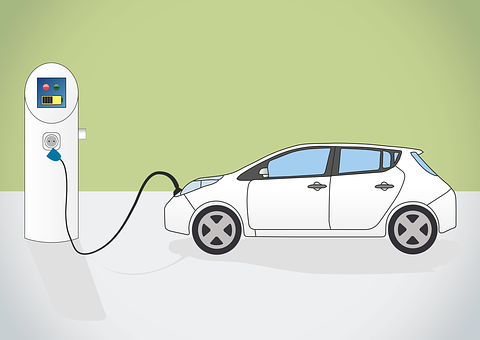This article is about Lithium Titanate Oxide Batteries which are popularly known as LTO. Here, we will analyze what are an LTO battery, its advantages, disadvantages, features, challenges, manufacturing risks, and some leading manufacturers across the globe.
Lithium Titanate Oxide Batteries (LTO)
LTO here stands for Lithium Titanate Oxide or lithium Titanate batteries. This is basically an anode that is used in lithium-ion batteries. We have seen that traditionally manufacturers used to use graphite in its natural or artificial form to make anode in lithium-ion batteries. Whereas, cathodes were made up of lithium Cobalt oxide, lithium nickel manganese, Cobalt oxide, lithium nickel Cobalt Aluminium oxide, and lithium iron phosphate.
This battery was used by Japanese company Mitsubishi as well as Honda in some of their electric vehicles and Electric bikes. But, looking at their advantages and various benefits, manufacturers all over the world started using this as an anode in their lithium-ion batteries. Manufacturers in India are also including this in their batteries in order to increase the efficiency, range, life, and charge-discharge cycle of the battery.

Advantages and Disadvantages of LTO Battery
We know that every coin has two sides. So is the case with LTO batteries. These batteries have several advantages as well as disadvantages if we talk about their working, operations, efficiency, range, charge cycle, and other properties.
Advantages of LTO Battery
Large Surface Area
They have a surface area of around 100 square meters per gram which is much higher than that of graphite anode which has 3 square meters per gram. This property of LTO battery allows the electrons to enter and leave quickly.
Fast Charging
LTO batteries can charge as fast as 100 capacitor batteries. In simple terms, it requires just 6 minutes to get an 80% charge from 0%. After 80% charge, CV mode gets on which reduces the speed of charging.
High Discharge Rate
Along with the high charging rate, their discharge rate is also very high. This makes them suitable for applications in devices that need high power for a very short period of time. They find their usage in UPS for computers where backup requirement time is very less.
Operating Temperature
These batteries can operate at temperatures from minus 40 degree Celsius up to 60 degrees Celsius. This makes them more suitable for various applications in different industries. This is one important reason why they are chosen over other lithium-ion batteries which face serious damage after 45 degrees Celsius.
Safety Features
LTO batteries are very safe to use and do not catch fire like other LCMC and MCA batteries. Even in case of any mishappening, they do not release smoke and spark which makes them very safe.
Life Cycle
LTO batteries have a very long life cycle and have the capacity to go over 40,000 charge cycles. Their normal life is more than 30 years which means they can be recycled again and again. This makes them the most preferred battery nowadays by the leading electric vehicle manufacturers across the globe.
Disadvantages of LTO Batteries
This battery has a discharge capacity of 175 mah per gram which is less as compared to graphite which has a discharge capacity of more than 350 mah per gram at a rate of 0.1 c.
Another disadvantage associated with LTO batteries is that the amount of active material loading on the anode is more as compared to other metals and minerals in other batteries. The major drawback of this thing is that it increases the overall weight of the cell.
The third disadvantage of LTO batteries is that the gravity metric energy density is much more than that of lead-acid batteries.
As compared to LFP batteries, the gravimetric energy density is lower.
Challenges Regarding LTO Batteries
LTO batteries are so expensive that it becomes a limiting factor when it comes to mass adoption by common people.
Its cost makes it very difficult for the manufacturers to use it in all-electric vehicles as compared to traditional NMC and LFP batteries.
The weight of these batteries is also very high which makes it a second option for the manufacturers over other conventional or traditional batteries available.
LTO Battery Manufacturers
There are various companies that manufacture lithium titanate batteries globally which are-
| Company Name | Headquarters |
| Log9 Materials | Bangalore (India) |
| Altairnano | America |
| Leclanche | Switzerland |
| Microvast | Texas (USA) |
| Samsung (uses in S pen) | Korean |
| Seiko (uses in Watch) | Japan |
| Toshiba | Japanese |
| Yabo Power | Shenzhen (China) |
LTO Battery Manufacturers in India
Seeing the potential, efficiency, range, and other positive factors of LTO batteries, a lot of manufacturers have started manufacturing LTO batteries in India.
Log9 Materials is an Indian nanotechnology company based out of Bangalore that has started manufacturing LTO batteries in India. They have started manufacturing in their Bangalore plant and are planning to expand their manufacturing in other Indian states.
Log9 is working in the areas of sustainable energy and filtration and has 16 patents regarding LTO battery manufacturing. They also have developed Aluminium fuel cells for mobility and stationary energy applications for various industries.

Conclusion
So, we discussed a lot about Lithium Titanate Oxide Batteries in this article. The manufacturers and researchers have understood the potential and growth that this battery has over other existing traditional batteries that are being used by manufacturers for various electric vehicles. A lot of research and development is going on in order to make these batteries available for mass production bringing down their initial cost.
A lot of companies have already entered this segment for manufacturing LTO batteries along with many new startups. Our government is helping these companies to manufacture more and more such batteries which will change the future of electric mobility in the coming times.

